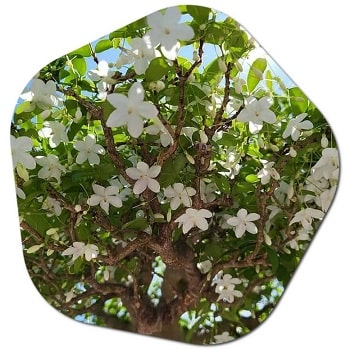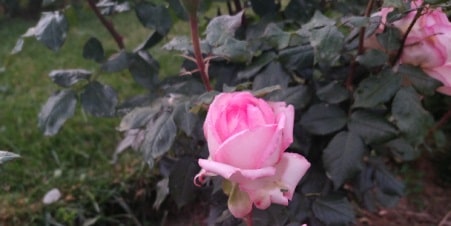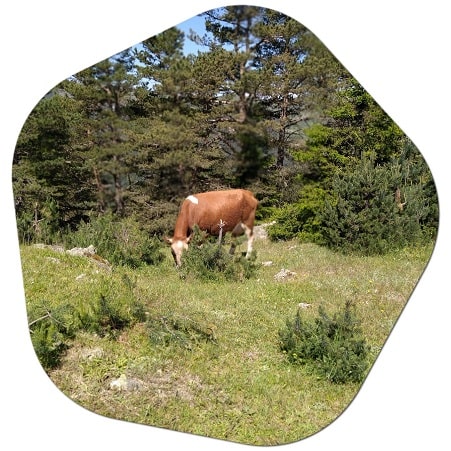What plants are common in San Francisco?
San Francisco has a Mediterranean climate. Summers are hot and dry and winters are mild and rainy. The highest temperature varies between 21°C and the lowest temperature between 7°C throughout the year. Morning and evening fogs are so dense and famous that they resemble rain.
San Francisco has a Mediterranean climate, characterized by mild, wet winters and cool, dry summers. This climate is suitable for a variety of plants, including both native and non-native species. Here are some common plants you can find in San Francisco:
- Eucalyptus: The city is known for its iconic eucalyptus trees, which are native to Australia but have been widely planted in San Francisco. They are known for their tall, slender trunks and aromatic leaves.
- California Poppy: The California state flower, the California poppy, is a common sight in San Francisco. It is a drought-tolerant plant with vibrant orange or yellow flowers.
- Ice Plant: Ice plants, specifically the Carpobrotus species, are popular ground cover plants in San Francisco. They have succulent leaves and produce bright pink or purple flowers.
- Succulents: Given the city’s dry summers, succulent plants are well-suited for San Francisco gardens. Species like aeoniums, agaves, and sedums are commonly grown for their unique shapes and ability to store water.
- Jasmine: Fragrant jasmine vines are commonly found in San Francisco, adding a pleasant scent to gardens and landscapes. The most common variety is Jasminum polyanthum, known for its profusion of white flowers.
- Roses: San Francisco’s mild climate is ideal for growing roses. Many varieties, including hybrid teas, floribundas, and climbers, thrive in the city’s gardens and parks.
- Japanese Maple: Japanese maple trees are a popular ornamental choice for their striking foliage and graceful form. Their vibrant colors in the fall make them particularly beautiful.
- Rhododendrons and Azaleas: These flowering shrubs are well-suited to the coastal climate of San Francisco. They produce vibrant blooms in various shades of pink, purple, and white.
- Lavender: The Mediterranean climate of San Francisco is ideal for growing lavender. This aromatic herb thrives in the city’s warm, dry summers.
- Fuchsias: Fuchsias, with their pendulous, bell-shaped flowers, are often seen in San Francisco gardens. They come in a range of colors and are known for attracting hummingbirds.

These are just a few examples of the plants commonly found in San Francisco. The city’s diverse microclimates and gardening preferences contribute to a wide variety of plant choices.
What plants are in the San Francisco Bay?
The San Francisco Bay Area is home to a diverse range of plants due to its varied climate, including coastal, wetland, and inland habitats. Here are some common plants you can find in the San Francisco Bay area:
- Tule: Tule (Schoenoplectus acutus) is a tall, grass-like plant that grows in wetland areas around the San Francisco Bay. It forms dense stands and provides important habitat for birds and other wildlife.
- Saltgrass: Saltgrass (Distichlis spicata) is a perennial grass that thrives in saline and brackish marshes along the Bay. It is adapted to the high salt content in the soil and helps stabilize the marsh ecosystem.
- California Buckeye: California Buckeye (Aesculus californica) is a deciduous tree native to the Bay Area. It produces showy clusters of white or pink flowers in spring and has distinctive palmate leaves.
- Coastal Redwood: The coastal redwood (Sequoia sempervirens) is an iconic tree of the region. While it is more commonly found along the northern California coast, it can also be found in parts of the San Francisco Bay Area. These towering trees are known for their impressive height and are among the tallest in the world.
- Toyon: Toyon (Heteromeles arbutifolia), also known as California holly, is a shrub or small tree with dark green leaves and clusters of red berries. It is a native plant that provides habitat and food for birds and other wildlife.
- California Poppy: The California poppy (Eschscholzia californica) is the state flower of California and can be found throughout the Bay Area. It is known for its vibrant orange or yellow flowers and thrives in open, sunny areas.
- Coyote Bush: Coyote bush (Baccharis pilularis) is a common shrub found in coastal areas and along the edges of the San Francisco Bay. It has small, green leaves and clusters of white or pinkish flowers.
- Coastal Sagebrush: Coastal sagebrush (Artemisia californica) is a native shrub that grows in coastal habitats around the Bay. It has silvery-gray foliage and a distinctive fragrance.
- Poison Oak: Poison oak (Toxicodendron diversilobum) is a plant that is best avoided due to its ability to cause allergic reactions in many people. It has three leaflets and can be found in wooded areas and along trails.
- Various Wetland Plants: The San Francisco Bay also supports a variety of wetland plants such as pickleweed (Salicornia spp.), cordgrass (Spartina spp.), and marsh gumplant (Grindelia stricta), which play important roles in the bay’s ecological health.

These are just a few examples of the plant species you can find in the San Francisco Bay Area. The region’s diverse habitats, including coastal areas, wetlands, forests, and grasslands, contribute to a rich plant biodiversity.
Is San Francisco good for gardening?
San Francisco can be a good place for gardening, but it does come with its unique challenges due to the city’s microclimates and specific growing conditions. Here are some factors to consider:
- Climate: San Francisco has a Mediterranean climate characterized by mild, wet winters and cool, dry summers. This climate is generally favorable for growing a wide range of plants, including many Mediterranean and drought-tolerant species. However, it’s important to be aware of the microclimates within the city, as there can be significant variations in temperature and fog patterns from neighborhood to neighborhood.
- Fog: The coastal areas of San Francisco can experience heavy fog, which can impact plant growth and sunlight exposure. Some plants may struggle in areas with consistent fog, while others may thrive in these cooler and more humid conditions.
- Wind: San Francisco is known for its windy conditions, especially in certain neighborhoods and along the coast. Strong winds can impact plant health and growth, so it’s important to choose wind-resistant plants and provide proper wind protection for more delicate species.
- Microclimates: Due to the varied topography and geography of the city, San Francisco has numerous microclimates. Certain neighborhoods may experience warmer or cooler temperatures, higher or lower rainfall, or more or less fog than others. It’s important to understand the specific microclimate of your garden location to select appropriate plants.
- Space: San Francisco is a densely populated city with limited space for gardening, especially in urban areas. Many residents opt for container gardening, rooftop gardens, community gardens, or small backyard gardens. Vertical gardening techniques and utilizing small spaces effectively can be helpful for maximizing gardening potential.
- Soil: The soil composition in San Francisco can vary depending on the neighborhood and location. Some areas have sandy or loamy soil, while others have clay or rocky soil. Conducting a soil test and amending the soil as necessary can help ensure optimal plant growth.

Despite the challenges, San Francisco’s mild climate and diverse microclimates offer opportunities for a wide range of plants. Many residents successfully grow ornamental plants, vegetables, herbs, succulents, and drought-tolerant species. Additionally, the city has numerous resources, such as local nurseries, gardening clubs, and workshops, that can provide guidance and support for gardening in San Francisco.
What is the vegetation in San Francisco?
The vegetation in San Francisco is diverse and influenced by the city’s unique climate, topography, and microclimates. Here are some key aspects of the vegetation in San Francisco:
- Coastal Scrub: Along the coastal areas, particularly in the western parts of the city, you can find coastal scrub vegetation. This includes shrubs and low-growing plants adapted to the coastal environment, such as coyote brush, California sagebrush, beach strawberry, and dune grasses.
- Coastal Woodland: In areas with more shelter and a slightly inland location, coastal woodlands can be found. These woodlands feature trees like Monterey cypress, coast live oak, and various native shrubs and understory plants.
- Eucalyptus Trees: San Francisco is known for its iconic eucalyptus trees, which are not native to the region but have been widely planted and have become a defining part of the city’s landscape. The blue gum (Eucalyptus globulus) is the most common species, but other varieties like the silver dollar gum (Eucalyptus cinerea) can also be found.
- Oak Woodlands: In some parts of San Francisco, particularly in the southern and eastern areas, you may come across oak woodlands. These woodlands feature species like coast live oak (Quercus agrifolia), blue oak (Quercus douglasii), and valley oak (Quercus lobata).
- Urban Gardens and Parks: San Francisco is known for its urban gardens, community gardens, and well-maintained parks. These spaces showcase a wide range of plantings, including ornamental flowers, flowering trees, succulents, herbs, and vegetables. Some notable parks in San Francisco include Golden Gate Park, Dolores Park, and the San Francisco Botanical Garden.
- Coastal Wetlands: The San Francisco Bay Area is home to various wetland habitats, including salt marshes and tidal wetlands. These areas support specialized plant communities, including saltgrass, pickleweed, cordgrass, and marsh gumplant, which are adapted to tolerate the brackish water and fluctuating tides.
- Residential Gardens: In the residential areas of San Francisco, you’ll find a mix of plantings based on individual preferences. Residents often cultivate a variety of ornamental plants, including roses, hydrangeas, lavender, succulents, and a range of flowering perennials and annuals.
It’s important to note that the vegetation in San Francisco can vary from neighborhood to neighborhood and depending on the specific microclimate and growing conditions. The city’s diverse plant life adds to its charm and offers opportunities for exploring different types of ecosystems and plant communities within its boundaries.
Why is San Francisco the greenest city?
San Francisco is often regarded as one of the greenest cities for several reasons:
- Environmental Consciousness: San Francisco has a strong culture of environmental consciousness and sustainability. The city and its residents have long prioritized environmental protection, conservation, and sustainable practices. This commitment is reflected in policies, initiatives, and individual actions aimed at reducing carbon emissions, promoting renewable energy, and preserving natural resources.
- Renewable Energy: San Francisco has made significant strides in adopting renewable energy sources. The city has a goal of achieving 100% renewable energy by 2030, and it has already made significant progress in sourcing its electricity from renewable sources like wind and solar power. Additionally, San Francisco has a robust infrastructure to support electric vehicles and has implemented charging stations throughout the city.
- Public Transportation: San Francisco has a well-developed and extensive public transportation system, including buses, streetcars, cable cars, and a subway system (BART). The availability and accessibility of public transportation options encourage residents and visitors to rely less on private cars, reducing traffic congestion and carbon emissions.
- Green Spaces and Parks: San Francisco boasts numerous green spaces and parks, providing opportunities for residents to connect with nature. The city is home to famous parks like Golden Gate Park, Presidio Park, and numerous neighborhood parks that offer recreational opportunities, wildlife habitats, and urban greenery.
- Waste Management and Recycling: San Francisco is known for its innovative waste management practices. The city has implemented a comprehensive recycling and composting program, diverting a significant amount of waste from landfills. San Francisco aims to achieve zero waste by 2020, further emphasizing its commitment to sustainable waste management practices.
- Bike-Friendly Infrastructure: San Francisco has been working to improve its bike infrastructure and promote cycling as an alternative mode of transportation. The city has expanded its network of bike lanes, introduced bike-sharing programs, and implemented bike-friendly policies to encourage more sustainable transportation options.
- Conservation Efforts: San Francisco actively supports conservation efforts to protect natural habitats and preserve biodiversity. The city has designated several areas as protected habitats and open spaces, providing opportunities for wildlife conservation and habitat restoration.
It’s important to note that while San Francisco has made significant progress in its sustainability efforts, there is still work to be done, and challenges remain. However, the city’s commitment to environmental consciousness, renewable energy, public transportation, green spaces, waste management, and conservation contribute to its reputation as one of the greenest cities in the world. Best native plants for san francisco >>
Balcony and potted flowers in San Francisco
San Francisco is well-suited for growing balcony and potted flowers due to its mild climate and diverse microclimates. Here are some tips for growing balcony and potted flowers in San Francisco:
- Consider Microclimates: San Francisco has a range of microclimates, so it’s important to consider the specific conditions of your balcony or outdoor space. Some areas may receive more sun and warmth, while others may be shrouded in fog or experience cooler temperatures. Choose plants that are suitable for your specific microclimate.
- Sunlight Requirements: Assess the amount of sunlight your balcony receives throughout the day. Some plants thrive in full sun, while others prefer partial shade. Select flowers that match the sunlight conditions of your balcony. If you have a shaded balcony, consider shade-loving plants such as impatiens, fuchsias, or begonias.
- Container Selection: Choose suitable containers for your potted flowers. Ensure they have proper drainage holes to prevent waterlogging. Consider the size of the plants when selecting containers, allowing enough space for their roots to grow.
- Soil and Watering: Use a well-draining potting mix to provide proper drainage for your plants. Regularly monitor the moisture levels of the soil and water your plants accordingly. Be mindful not to overwater or let the soil dry out completely.
- Wind Protection: San Francisco can be windy, especially in certain areas. If your balcony is exposed to strong winds, consider placing windbreaks or installing trellises to protect your potted flowers from wind damage.
- Plant Selection: Choose flowers that are suitable for container gardening and can thrive in the San Francisco climate. Some popular choices for balcony and potted flowers in the area include geraniums, petunias, marigolds, pansies, snapdragons, and succulents. Additionally, herbs like basil, rosemary, and mint can also be grown in containers.
- Maintenance: Regularly inspect your potted flowers for pests, diseases, and nutrient deficiencies. Prune and deadhead your plants to encourage healthy growth and prolong blooming. Fertilize your plants with a balanced, slow-release fertilizer or use organic fertilizers as needed.
- Water Conservation: San Francisco values water conservation, so consider using efficient watering techniques. Use a watering can or drip irrigation system to deliver water directly to the plants’ roots and minimize water waste.
Remember to research the specific care requirements of the flowers you choose and adapt your gardening practices based on the conditions of your balcony. Enjoy the process of gardening and the beauty of having blooming flowers on your balcony in San Francisco! Plant species for San Francisco >>





